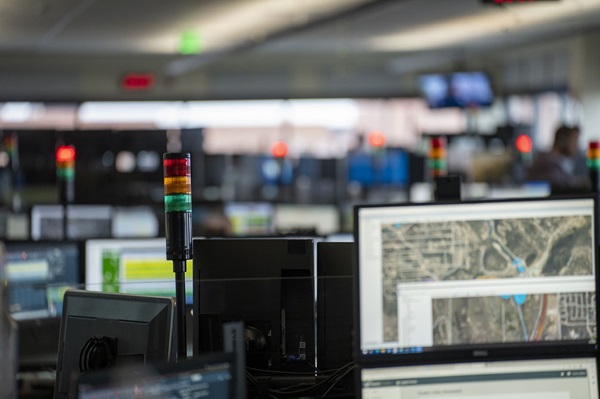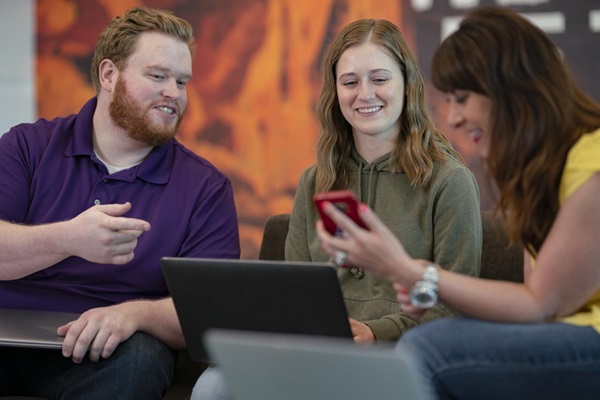Tabletop exercises are a valuable tool for organizations, whether they’re corporations, healthcare facilities, schools, or government agencies. These interactive simulations are a safe, cost-friendly, and low-risk way to assess your organization’s emergency response.
This blog will dive deeper into how a tabletop exercise works, the pros and cons, how to plan a tabletop exercise, and how to successfully conduct one with your organization.
What is a tabletop exercise?
A tabletop exercise is a preparedness activity that simulates an emergency incident. During an informal meeting, team members discuss their roles and responses to an emergency. A facilitator acts as team leader, guiding the rest of the participants through a discussion of one or multiple emergency scenarios.
Also known as a TTX, an effective tabletop exercise prepares teams to handle emergencies, encourages collaboration, and identifies opportunities to improve response to real life events.
Tabletop exercises may be confused with other types of emergency preparedness exercises, which the U.S. Department of Homeland Security lists as walkthroughs, workshops or orientation seminars; functional exercises; and full-scale exercises.
Walkthroughs, workshops and seminars are considered basic training for team members in an organization. Functional exercises take place in a simulated operational environment, as opposed to a discussion-only environment such as a tabletop exercise. Finally, full-scale exercises are lengthy, on-site simulations that are as close to the real scenario as possible.
Advantages and disadvantages of conducting tabletop exercises
Tabletop exercises are budget-friendly, low-risk methods of evaluating current preparedness plans, clarifying team member responsibilities, and improving response and collaboration between teams.
Tabletop exercises can also be customized to specific emergency situations. For example, the National Nurse-Led Care Consortium lists various tabletop exercises suited for different types of emergencies: natural disasters, pandemics, acts of terrorism, and technology malfunctions.
Other benefits of conducting tabletop exercises include:
- Providing teams with a safe space to ask questions, think critically, and make decisions
- Testing recently changed or new procedures
- Receiving team member feedback to improve plans
- Identifying weak points or opportunities for improvement in plans
- Engaging team members
- Keeping team member training up to date
- Increasing awareness and understanding of emergency scenarios
Despite all their benefits, tabletop exercises are not flawless. There are drawbacks to this method of emergency preparedness.
They cannot completely replicate what will happen in a critical incident, no matter how much information is gathered. Emergencies are unpredictable, and team members may forget what to do or act differently as it is occurring.
Tabletop exercises may also fail to include details that may make a difference during a real-life event. Because they are discussion-based only, it is a superficial exercise of a team’s capabilities, as well as the organization’s emergency plans.
Planning a tabletop exercise
Define your goals
To develop an effective tabletop exercise, begin with your desired outcome. What goals do you want to achieve with this tabletop exercise? How will you use the results of the exercise to improve your emergency preparedness?
Examples of goals might be:
- Pinpointing and understanding any gaps in current emergency plans
- Assessing team readiness, knowledge, and response
- Testing new or updated procedures
- Educating team members about a new emergency scenario
- Improving response and response time from previous tabletop exercise performances
Your goals can be comprehensive or specific, but be sure to outline them prior to conducting your tabletop exercise.
Assemble a Team
A tabletop exercise includes a facilitator and multiple participants. Participants may include members of one department, one representative from individual departments, employees grouped by functionality or leadership, or employees grouped by location.
Outside of the group involved, you may have team members act as observers and evaluators. Observers view the tabletop exercise as it is running but are not actively participating, though they may ask questions or make suggestions. Evaluators document the tabletop exercise and can assist in implementing changes to plans based on what was learned.
Design the scenario
You’ve likely already identified potential threats or emergencies your organization will face. Use that information to develop an emergency scenario for your exercise. It may help to look back at your goals for the tabletop exercise, which can help you choose and define your scenario.
For example, if your organization is headquartered in a location that is prone to wildfires, you may use that as your scenario. Explain that a fire has broken out a specific distance from your headquarters and is moving closer. Firefighters have responded, and no evacuation has been ordered yet, but it may threaten your business.
Once your scenario has been outlined, prepare questions that will test your objective and help you achieve your goals. Examples include:
- What information do you need?
- What action would you take first?
- Who do you contact?
- What is your top priority?
As your scenario evolves, prepare other questions that might test your team members’ training, knowledge, communication skills, and capabilities.
Conducting a tabletop exercise
Act out the scenario
When your planning is complete, it’s time to conduct the tabletop exercise. Gather your team, and choose an environment that nurtures discussion. Think open spaces, comfortable seats, and free of distracting items or objects that might limit hearing or eye contact. Provide notepads and pens so participants can take notes or jot down questions and concerns.
Allow for questions
A good facilitator will keep the discussion moving, but also look for opportunities to probe for more information or discover valuable insights. Allow participants to ask questions and make suggestions. If friendly conflicts arise, don’t cut them short if they are productive, as long as participants remain fair and respectful. You might uncover key details in these conflicts.
Your designed scenario should include a script, but be flexible when the tabletop exercise is in session. Choose a facilitator who is alert, engaging, and intuitive. Be flexible and allow the conversation to flow naturally, but return back to the topic on hand so the exercise can continue.
Reflect on the exercise
Once the tabletop exercise concludes, put together a report using the data collected, as well as data collected by evaluators and observers present.
Your report can include:
- A summary of how the exercise went
- General observations and overall recommendations
- Suggestions for improvement or gaps identified
- An actionable plan to improve team response to the scenario
Finally, use the information in your report to make necessary changes in your emergency preparedness plans. This is key, and one of the top goals in conducting a tabletop exercise. Without a report and follow-through, tabletop exercises will simply pinpoint issues that go unfixed.
Prepare your organization for emergencies with regular tabletop exercises
Periodic tabletop exercises are helpful tools in your ongoing crisis management strategy. Conducting them regularly will help your organization find weaknesses, strengthen team response, and prepare for emergencies in the future.
Another vital tool for emergency preparedness is an effective communication system and platform. Your team’s emergency preparedness cannot reach its top potential with poor collaboration and communication.
The Rave Mobile Safety Suite empowers businesses, healthcare facilities, schools, government organizations, and communities with trusted communication and safety tools, including:
- A secure, multimodal mass notification system that reaches people in just three clicks
- A personal safety app to protect and communicate with remote or traveling employees
- An online portal where employees can access emergency policies and procedures
- An emergency communication tool that improves incident management and response
Our platform works with existing communications infrastructure, so there’s no need to rip and replace your current systems. Your organization won’t need to endure a lapse in communication. Rave software can be up and running in mere days, and your organization can benefit from excellent performance and peace of mind knowing that you are protected. Be better prepared for emergencies in the future with the Rave Suite. To learn more about Rave’s solutions for corporations, or to learn about customizing your own solutions package, schedule a demo today.





Comments are closed here.